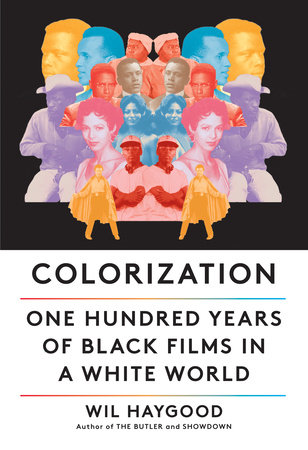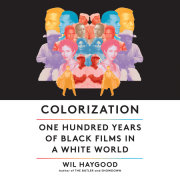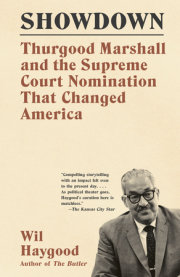1
Movie Night
at Woodrow Wilson’s White House
IN THE AFTERMATH of the Civil War, fathers throughout the Southern states—its landscape in ruins, the populace grieving—had to start imagining a future for their sons, who had either fought in the war or grown up around it. The Lost Cause of the Confederacy left the entire region in a state of near-shock. For families that still had money from cotton and plantation revenues, a college education for their sons was seen as a key to reclaiming a bright family future. No matter how smart the women in families were, or how intellectually gifted, it remained a patriarchal-led society.
Before the war, many moneyed families became attracted to colleges and universities in the North. Princeton University was a school that particularly stood out among Southern gentry. Fifteen Southern governors could count themselves as Princeton grads. It was not lost on Southerners that Alexander Boteler, Princeton Class of 1835, had helped design the Confederate flag. Boteler was revered throughout the South. In 1857, Rev. George Armstrong—Princeton Class of 1832—published The Christian Doctrine of Slavery. He argued that Southerners took better care of slaves than Northerners could imagine, though allowing, as he put it, for “some deprivation of personal liberty.” Two years after Armstrong’s screed, in 1859, a contingent of Princeton students from below the Mason-Dixon Line marched across their campus burning effigies of pro-Union Northern political figures. Alexander Stephens, who would serve as vice-president of the Confederacy from 1861 to 1865, proclaimed Princeton graduates to be “superior to those of any other school or college in the country.” During the long and bloody Civil War, seven Confederate brigadier generals were Princeton men. Some saw fit to sing the Princeton fight song as they galloped in the direction of Union cannon fire.
Joseph Wilson prided himself on his Southern ministry. In his reading of the Bible, slavery was simply a necessity. He and his wife, Jessie, had moved around the South, from Virginia to South Carolina and on to North Carolina. Jessie Wilson tended wounded Confederate soldiers. In the aftermath of war’s end, the Wilson family held on to endless grudges. They were especially pained with the onset of the Reconstruction era, when the United States tried to bring a measure of equality and opportunity to formerly enslaved Blacks. Their son Woodrow Wilson was born in Virginia and grew up in and around the South amidst Reconstruction. Young Woodrow thought of Reconstruction as a terrible experience for his family and other Southern whites. His earliest school tutoring came from Confederate veterans; they were men he came to admire greatly, men who told him of the great battles they had fought to keep the South firmly in the grip of whites and away from Abe Lincoln, whom they called a madman, and whose assassination they did not bemoan. In 1875, Woodrow Wilson’s parents—after he had spent a year at Davidson College—sent him off to a school they had heard a lot about because of its southern pedigree: the College of New Jersey, the school that would become Princeton University.
Woodrow Wilson easily took to college life. He joined clubs and organizations. He honed a gift as a public speaker; his articles for the student newspaper were widely and favorably commented upon. Professors praised his serious approach to academic life. Wilson made friends with classmates who hailed from Southern states, all bonding together over their history and hometowns. One of the people Wilson would have come across on campus was a gentleman by the name of Jimmy Johnson. Johnson began work at the school as a janitor in the 1840s and would remain there for sixty years, later also selling snacks at a makeshift stand on campus. Jimmy Johnson was a runaway slave from Maryland. He was ever mindful of trips that ranged too far from campus, nervous about bounty hunters and slave catchers. The runaway slave never met any Black students at Princeton, because they were not allowed.
While on campus, Woodrow Wilson convinced himself he might prefer a career in law. He applied to the University of Virginia Law School and was accepted. Several years later, after undergoing an abbreviated law-school stint and passing the bar exam, Wilson was settled in Atlanta and practicing law. But he felt his chosen profession boring and began imagining instead a career in public service or academia. To make that happen, he was advised to seek a doctoral degree. He applied and was accepted to Johns Hopkins University, in Baltimore. He arrived on the campus in 1883.
A restless sort, Wilson sat through doctoral classes and concluded they were stuffy, and the professors too concerned with minutiae. The books assigned to him made him roll his eyes. So he began thinking of a book he himself would like to write. He began compiling notes about the inner workings of the United States government, and managed to get his book, Congressional Government, published in 1885. His professors were downright surprised. Some doubtless were also a little jealous. Wilson had dived into the gears of a churning government and explained its motions. There were six separate sections, all drawing the reader deeper into the arcane workings of the nation’s political system. It was a dryly worded document, but enough critics thought of it as original scholarship to give it a shelf life. Woodrow Wilson was no longer just a doctoral student; he was a doctoral student who had published a book. Damn the traditional route to a thesis! The book gave Wilson a kind of celebrity around campus.
The young student author resided in a boarding house near campus, where he found the nightly dinners lively, with animated conversations. One guest who befriended Wilson was Thomas Dixon, Jr. Both men gravitated toward literature and writing. Both also hailed from and loved the South and had a sharp disdain for Negroes. “The only place in the country, the only place in the world, where nothing has to be explained to me, is The South,” Wilson would come to say. Dixon was not shy in telling classmates he was going to write novels someday. He was also proud to tell them that his father had been a vaunted member of the Ku Klux Klan following Reconstruction. Dixon, however, wasn’t long for Johns Hopkins; he left before the end of his first year, then bounced around in a variety of jobs—actor, minister, lecturer, finally writer.
The years ahead saw Woodrow Wilson settle into the world of academia. In 1890, he became a Princeton professor. By 1902, Wilson had ascended to the presidency of Princeton. Campus buildings were erected during his tenure; enrollment increased. During the same period, Thomas Dixon began to write a trilogy of novels that would avenge what he deemed the massive white suffering that had taken place during Reconstruction across the South. Two of Dixon’s novels, both with baroque titles, became national bestsellers. The Leopard’s Spots: A Romance of the White Man’s Burden was published in 1902. Three years later, in 1905, came The Clansman: A Historical Romance of the Ku Klux Klan. His trilogy was complete with The Traitor, published in 1907.
New Jersey Democrats were closely following the rise of Woodrow Wilson. He had taken on snobbery at Princeton and appeared to be reform-minded. Political operatives imagined such traits could be attractive to voters. Wilson himself had always been enamored of those who succeeded in politics, so, when approached by politicians to run for governor of New Jersey, he accepted, launched a campaign, and won in 1910.
As the 1912 presidential election approached, many saw President William Howard Taft as vulnerable. Former President Theodore Roosevelt launched a third-party campaign; his lively supporters and followers became known as the Bull Moose Party. The Republican Party might now end up splitting votes, increasing the chances of victory for the Democratic nominee. Even though he had yet to complete his first term as New Jersey governor, Democrats nominated Woodrow Wilson to take their party into the fall elections. The Republican Party split did indeed prove disastrous: Wilson won forty states and he became the twenty-eighth president of the United States.
President Woodrow Wilson may have calmed the nerves of Negroes during his campaigning, but once he reached office, he enacted the kind of policies that convinced them they had been fooled. One of the early moves Wilson made was the resegregation of a previously integrated—at least in some departments—federal workforce. Congressional Democrats, with President Wilson backing them, began enacting measures to thwart Black achievement wherever they could. The Chicago Defender, one of the most widely read Black newspapers in the nation, wrote that Wilson’s first year in office had been “politically the most disastrous year since Reconstruction.” Wilson’s record on civil rights remained shameful, but when World War I broke out, he did not oppose the formation of Black officer-training facilities. And, on occasion, he would speak out against lynching, though more often when the victim had been a non-Black immigrant.
The Civil War era was a period that continued to haunt learned men of the South. Sitting in the White House, relaxing on any given afternoon, Wilson was apt to start recalling how the demands of Reconstruction had hurt his family and other whites. In order for Southern states to be readmitted to the Union after the war, they had to agree to terms that involved voting rights for Blacks, new schools, and the celebrated “40 acres and a mule” decree. It was a shock to the system for many whites to watch Blacks striding into classrooms on previously all-white campuses, and a backlash rose quickly. Klansmen galloped through the countryside, terrorizing Blacks who had won the vote. There were hangings; Blacks were run off their own properties. The Reconstruction period—1865–77—ended after a little more than thirteen years. Federal troops, put in place to protect Blacks, were removed, as was any federal oversight. Local politicians and powerful landowners went about returning the South to its former state of affairs—Blacks as second-class citizens. A white professor who had left the University of South Carolina because of the presence of Black students received a letter from a white trustee who was trying to lure the professor back to campus. “Nothing could be farther from my thoughts than suggesting, in the remotest manner possible, that you should,” the trustee wrote, “return here to teach negroes, or to connect yourself with any educational institution in which they are present or are likely to be present in social or other equality with our race.”
At times it seemed as if Wilson and Thomas Dixon were racing against each other to see who could get the most words published in defense of their beloved South. Wilson was steadily at work on what would become a ten-volume chronicle, titled The History of the American People, with the maiden volume arriving in 1901. The volumes, cloaked in the respectability of academia, were an outright attack against the North and the Reconstruction effort that had taken place on behalf of Black Americans. Dixon’s novels were more popular and drew the attention of Southern belles, Confederate veterans, conspiracy theorists, and book readers throughout the South. Dixon was steadily raising his profile by giving lectures that often turned into racist tirades against the North. The years had been kind to both Wilson and Dixon since they went their separate ways after Johns Hopkins, but no matter their good fortune, their animus toward the North remained feverish. Then, with publication of The Clansman, Thomas Dixon became an outright literary star.
The Clansman is a fulsome celebration of Ku Klux Klan brutality during Reconstruction. It portrays free Blacks running rampant throughout the South, raping white women and attacking their families. Its theme is that Blacks could not be trusted to handle the freedom they’d been given by the Emancipation Proclamation. Northerners tended to be repulsed by the novel’s gruesome and stereotypical depictions of Blacks. White southerners, however, turned the book into a bestseller: it surpassed the hundred thousand mark in sales.
David Wark Griffith was among the Southerners quite moved by Dixon’s novel.
D. W. Griffith was born in La Grange, Kentucky. He grew up listening to his father, Jake, retell episodes of his so-called glory in the Civil War. The stories, delivered on the Griffith farm in Kentucky—and embellished with the aid of bourbon—centered on the belief that Reconstruction and Northern allies of freed Blacks had ruined the elder Griffith’s homeland. When Jake Griffith died, the family lost its farm and its Black servants. They eventually moved to Louisville. Young D.W. began leaning heavily into books and hanging out with an artistic crowd. He eventually became an actor, and traveled around the country for more than a decade in stage productions—some of these low-rent vaudeville acts, others more professional. He discovered he had a gift for drama. When time permitted, he wrote plays. By spending so much time backstage, he became eager to learn all he could about directing even as he continued hustling for acting roles.
A consortium of inventors, working independently of one another, had been imagining that pictures could actually move if shown on a screen. Two film-equipment designers, Auguste and Louis Lumière, were working in France. Thomas Edison was headquartered in West Orange, New Jersey. One of the Lumière brothers had discovered the photographic plate; Edison had given the world the Kinetoscope, a forerunner of the movie projector. On April 23, 1896, during a vaudeville show at Koster and Bial’s Music Hall on Broadway in New York City, the first of twelve short films were shown before an audience. The audience squealed with both delight and wonder: People were dancing on screen! Two comics were moving about while boxing each other! Movie venues—called nickelodeons, since they only charged a nickel—were soon multiplying. The filmgoing craze was taking off. Improvements in cinema inventions kept coming, enthralling the nation’s populace.
D. W. Griffith found it difficult to make a name for himself as a New York actor. The years were rolling by, and he fretted about his future. His interest in directing became more intense. He began hanging out at the American Mutoscope and Biograph Company on East Fourteenth Street. (Biograph would join forces with the Edison Company to create the Motion Pictures Patents Company—the beginning of Hollywood.) He sold story ideas to executives at Biograph, the film company. One of his ideas was turned into a 1908 film, At the Crossroads of Life, in which Griffith also starred. That same year, Griffith got an opportunity to direct The Adventures of Dollie, his first film for the studio. Producers were impressed with his work habits, and Griffith was soon named general director of the Biograph studio. He would go on to direct scores of one-reel films in the coming years. He helped turn actresses like Dorothy Gish, Mary Pickford, and Lillian Gish into stars. He became notable for his vivid camera angles, crosscutting, the utilization of lighting, and close-ups, which had rarely been seen.
Copyright © 2021 by Wil Haygood. All rights reserved. No part of this excerpt may be reproduced or reprinted without permission in writing from the publisher.












